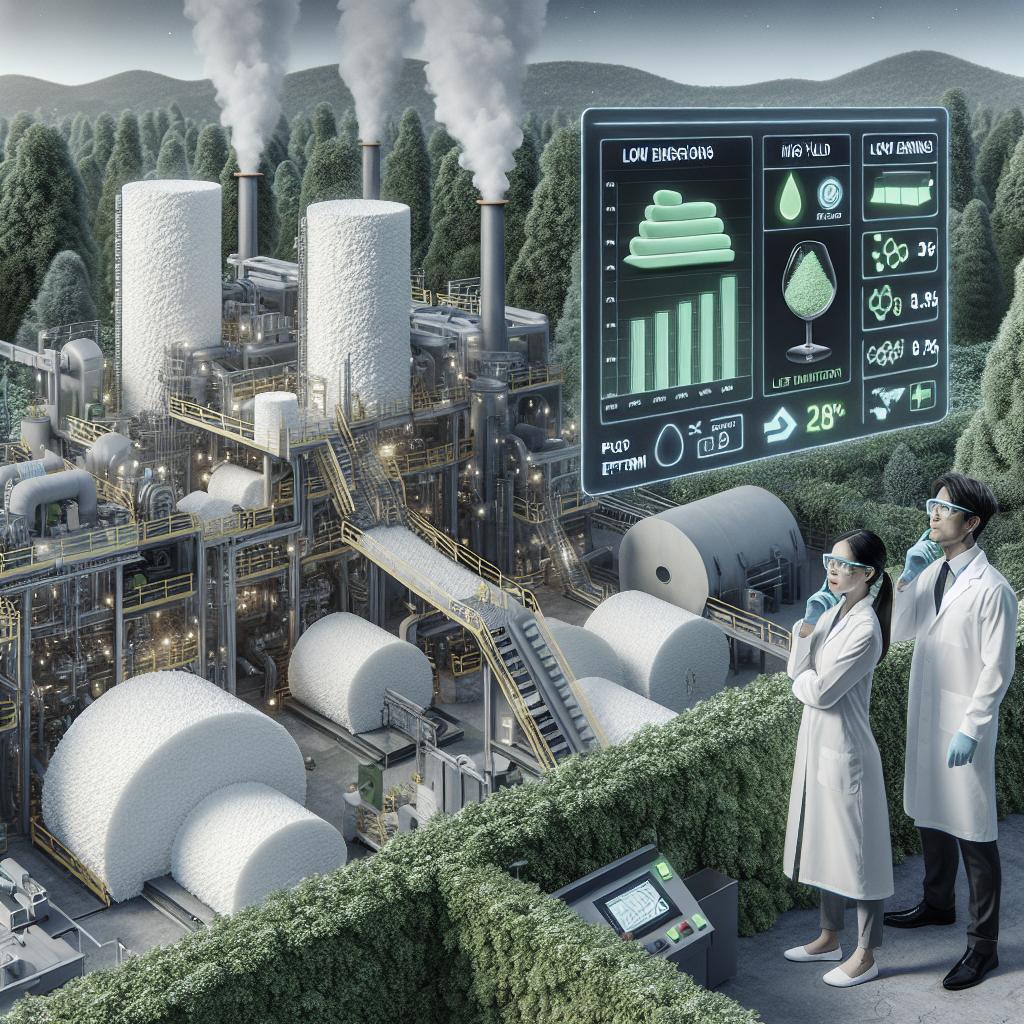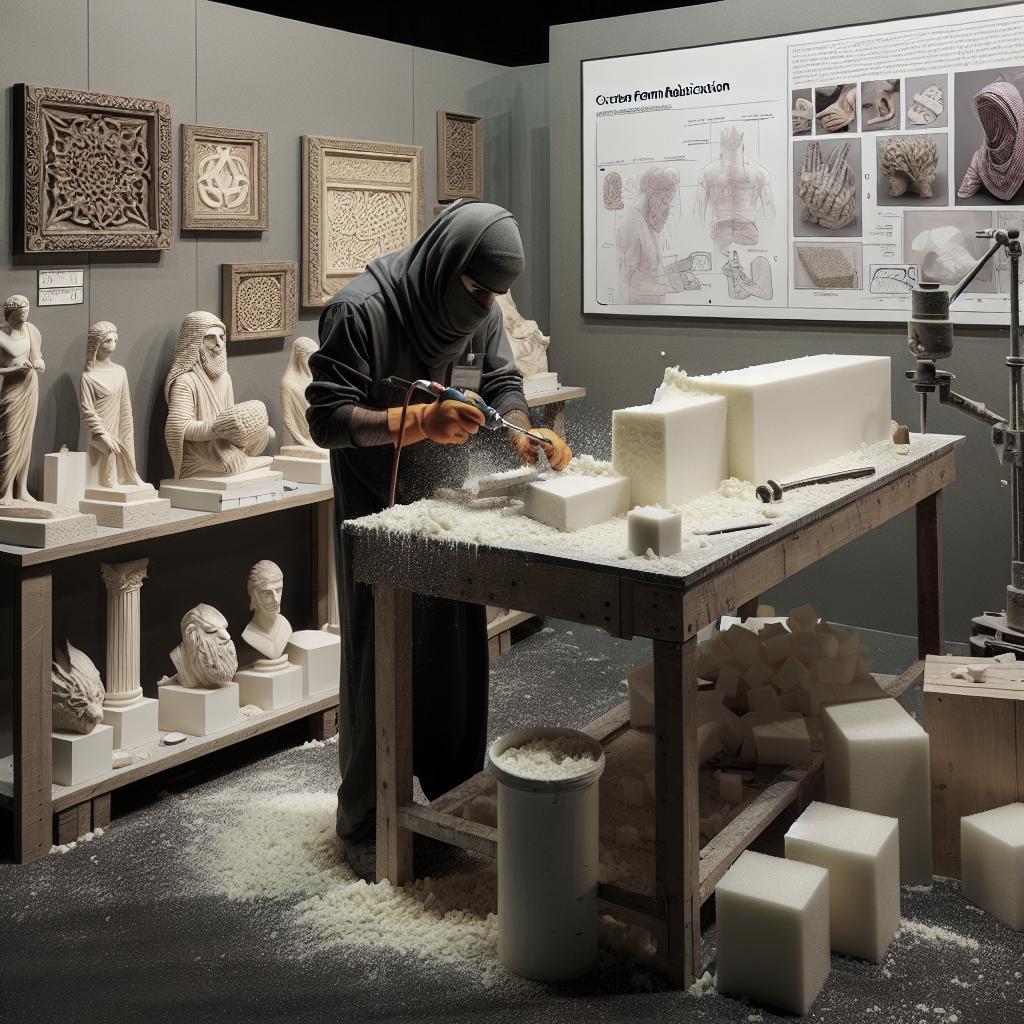The Foam Manufacturing Process
Foam manufacturing is an intricate and carefully orchestrated process that involves several stages, each contributing to the creation of versatile materials widely used in industries from construction to consumer goods. In this blog post, we will explore the various phases of foam production, guided by a structured approach that looks into the different stages of crafting and shaping foam. From understanding the types of foam like closed cell foam to the detailed methods of cutting and assembly, this article provides a comprehensive overview of how foam transitions from raw materials to finished products such as mattresses and more.
The Way We Do the Things We Do
The foam manufacturing process is much more than just a simple production line; it’s a culmination of technology, precision, and innovation. It starts with selecting the right type of foam, which is primarily divided into open cell and closed cell varieties. Each type has its own unique set of properties and applications, necessitating specific manufacturing techniques.
The journey from raw materials to finished products involves numerous steps, from processing the foam itself to cutting and assembling various forms. These processes ensure the foam achieves the desired quality, durability, and performance standards. Let’s take a look into key processes involved in creating different foam products utilized in diverse sectors.
Closed Cell Foam
Closed cell foam is a type of foam characterized by its compact structure where cells are enclosed and tightly packed together. This structure gives it superior insulation and resistance to moisture. Because of these attributes, closed cell foam finds extensive use in insulation, flotation devices, and automotive and sports equipment.
During manufacturing, the foam’s density can be adjusted according to specific requirements, affecting its firmness and insulation properties. The process often involves the inclusion of gas or other blowing agents that promote the cell formation, creating its distinctive closed structure. Understanding these technical details is crucial for selecting the right type of foam for specific purposes.
How Foam is Made
The initial stage of foam production involves the blending of polyurethane and other chemical compounds, which are essential in foam creation. These chemicals are carefully measured and mixed in large vats until they achieve a homogeneous consistency. As the mixture is poured into molds, a chemical reaction occurs, resulting in the foam expanding and solidifying into the desired shape.
Temperature and timing are critical in this stage. The expansion process generates heat, which must be carefully monitored to ensure consistent quality and avoid defects. Once fully expanded and cured, the foam blocks are ready for the subsequent phases of cutting and shaping.
Squeezer Trucks
Squeezer trucks play a crucial role in initially compressing large foam blocks, preparing them for precise cutting. As these foam blocks can be unwieldy and difficult to manage, squeezer trucks help in reducing them to manageable sizes, enhancing efficiency in downstream processes.
The mechanics of squeezer trucks are designed to maintain the integrity of the foam while ensuring uniform compression. This step is essential as it sets the stage for accurate cutting procedures, ensuring that the foam maintains its shape and structural integrity throughout the process.
Vertical Cutting
In the vertical cutting process, foam blocks are trimmed down to specified lengths and thicknesses using precision saws. This method is crucial for creating uniform slabs that conform to specific dimensions required for different applications. The equipment used is calibrated for high precision to ensure reliable and consistent cuts.
The precision of vertical cutting is fundamental in maintaining product quality, as inaccuracies can lead to wastage and inefficiencies in material use. Monitoring and setting correct parameters are vital parts of this phase to ensure that every cut meets industry standards.
Pattern Cutting
Pattern cutting is a specialized process where foam is cut into specific geometric shapes and patterns. This step is particularly important in industries such as furniture and bedding, where foam pieces need to fit within particular designs or structures for aesthetic and functional purposes.
Innovative CAD software and automated cutters are frequently employed in pattern cutting to achieve high accuracy and repeatability. Through CNC (Computer Numerical Control) technology, even the most complex patterns can be realized swiftly and precisely.
Horizontal Slitter
The horizontal slitter is an essential tool for slicing foam blocks into thin layers or sheets. This process is crucial for creating layers that are used in various upholstered products, where multiple layers of foam might be needed to achieve the desired thickness and cushioning effect.
It’s critical that the horizontal slitting process be even and smooth to ensure the comfort and durability of the end product. Advanced slitting machines feature fine-tuned controls to maintain consistent pressure and cutting speed, ensuring an even cut across the entire sheet.
Angle Cutting
Angle cutting is used to create foam pieces with different angles and bevels. This process is essential in applications requiring parts that need to fit into irregular spaces or to create comfort support zones, such as in mattresses or specialized cushions.
Utilizing advanced angle cutters, manufacturers can produce foam with precise angles that conform to specific design requirements. This versatility allows for the creation of ergonomic designs that maximize comfort and support, reflecting the customized needs of various industries.
Contour Cutting
Contour cutting involves sculpting foam into complex three-dimensional shapes. This technique is vital in producing foam components that serve specific functional or aesthetic purposes, such as packaging inserts or automotive and aerospace components.
Contour cutting is facilitated by sophisticated equipment that uses computer-guided systems to achieve detailed and intricate shapes. The capability to produce detailed contours allows for customization and innovation in product design, serving a wide range of needs and industries.
Fibre Cutting
Beyond foam, fibres are integrated to enhance the structural integrity and usability of the final product. Fibre cutting is a process that trims and prepares these fibres to be embedded or sewn into the foam, creating composite materials or enhancing existing ones.
Precision in fibre cutting ensures the durability and longevity of the product. With the integration of fibres, manufacturers can produce items that offer improved performance, catering to various consumer needs such as increased resilience and comfort.
Fabrication
Fabrication is the assembly phase wherein multiple foam pieces and fibres come together to create a cohesive product. This stage might involve gluing, welding, or stitching components to meet specific design and functional requirements.
Throughout the fabrication process, maintaining precision and care is paramount to ensure that the final product meets the intended specifications and quality standards. Effective fabrication harmonizes all elements, producing a product that is functional, aesthetic, and durable.
Quilting of Covers
Quilting of covers involves sewing layers of fabric and foam to form a cozy and protective outer shell for foam products, such as mattresses or cushions. Quilting not only enhances the aesthetic appeal but also improves comfort by ensuring the foam remains in place over time.
Advanced quilting machines enable the creation of intricate patterns and consistent stitching across large surfaces. The selection of materials and the quilting pattern are tailored to the desired look and comfort level, contributing to the product’s visual and functional appeal.
Cover Sewing
Cover sewing is the final step towards crafting the protective exterior of foam products. Precision sewing ensures all pieces are correctly aligned, enhancing both appearance and durability. Quality craftsmanship in this stage reflects in the longevity and overall aesthetics of the finished product.
Attention to detail is vital as poor stitching can lead to rapid wear and product failure. Employing skilled workers and using high-quality sewing machines ensure that covers meet the demanded standards and customers’ expectations.
Mattress Closing
Mattress closing is the culmination of the foam manufacturing process, where all previously crafted components are assembled into a final product. This involves sealing the mattress along seams to encapsulate the foam and maintain its shape and structural integrity.
A well-executed mattress closing ensures that the product is robust, safe, and ready for shipment or use. It is a testament to the importance of quality control as every element, from the foam to the outer cover, is integrated seamlessly to deliver the ultimate product experience.
Lessons Learned
| Manufacturing Step | Description |
|---|---|
| Closed Cell Foam | Foam with enclosed, tightly packed cells, offering superior insulation and moisture resistance. |
| How Foam is Made | Mixing polyurethane and chemicals results in foam expansion and curing into intended shapes. |
| Squeezer Trucks | Compress foam blocks for easier handling and precise cutting. |
| Vertical Cutting | Trimming foam blocks into consistent lengths and thicknesses using precision saws. |
| Pattern Cutting | Uses CAD and CNC to produce geometric designs for industry-specific applications. |
| Horizontal Slitter | Slices foam into thin sheets, essential for layered products requiring uniform cushioning. |
| Angle Cutting | Creates foam pieces meeting design needs through precise angle cuts. |
| Contour Cutting | Crafts complex three-dimensional shapes with computer-guided systems. |
| Fibre Cutting | Prepares fibres for integration, enhancing foam products’ structural integrity. |
| Fabrication | Assembles foam and fibres into a cohesive, functional product. |
| Quilting of Covers | Forms protective outer shells, enhancing comfort and acquisition. |
| Cover Sewing | Final assembly of the product cover, ensuring alignment and quality stitching. |
| Mattress Closing | Completes assembly, sealing seams for robust and durable mattress products. |


